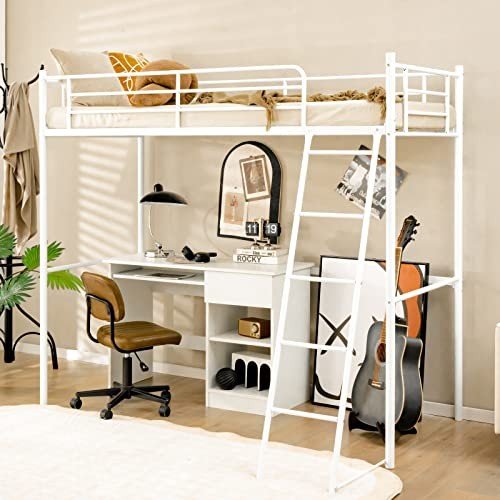A Comprehensive Guide to Children's Bunk Beds: Styles, Benefits, and Safety Considerations
Bunk beds have actually ended up being a popular option for households aiming to maximize space and provide an enjoyable sleeping environment for kids. With their unique style, they use an imaginative and practical service for shared bed rooms, playrooms, or even guest lodging. This post checks out the various designs of children's bunk beds, their advantages, security factors to consider, and answers some regularly asked concerns.
The Allure of Bunk Beds
Children's bunk beds are more than just space-saving structures; they are likewise an entrance to daring dreams and creative play. Below is an in-depth examination of their various advantages.
Advantages of Bunk Beds
- Space-Saving: Bunk beds efficiently make use of vertical space, making them a perfect option for smaller spaces.
- Spirited Design: Many bunk bed styles consist of slides, tents, and themed aspects, stimulating creativity and enjoyment.
- Partner Sharing: Bunk beds are perfect for siblings sharing a room or accommodating pajama parties.
- Versatile Use: Some models can be separated into 2 private beds, using versatility as children grow.
- Storage Options: Many bunk beds include integrated drawer storage or shelves, even more boosting their practicality.
Styles of Children's Bunk Beds
The range of bunk beds offered today caters to various choices and requirements. Below is a summary of some popular styles.
| Style | Description | Best For |
|---|---|---|
| Requirement Bunk Bed | A traditional style including one bed stacked above another. | Brother or sisters sharing a room. |
| Loft Bed | Comparable to a bunk bed without the bottom bunk, permits a workspace or play location below. | Minimal space for play/desk. |
| L-Shaped Bunk Bed | Two beds set up in an L-shape, often with additional sections for storage or play. | Distinct space designs. |
| Twin Over Full | A twin bed over a full bed, accommodating various sleep needs. | Growing kids and teens. |
| High Sleeper | Stands even higher than a loft bed, typically including a desk or play location below. | Older kids requiring more play/desk space. |
| Tent Bunk Bed | Bunk beds with a canopy or tent-like structure, creating a comfortable, enjoyable space. | Active and creative kids. |
Secret Features to Consider
When choosing the right bunk bed for kids, the following functions deserve thinking about:
- Material: Bunk beds can be made from wood, metal, or a mix. Each has its distinct visual and resilience.
- Weight Capacity: Always confirm the weight limit of the bunk bed to guarantee it can accommodate your kids securely.
- Safety Rails: Ensure the leading bunk has strong rails to prevent falls.
- Ladder Security: A well-designed ladder should offer simple and safe access to the upper bunk.
- Finishing: Ensure any surfaces are non-toxic and safe for children.
Security Considerations
Safety is paramount when it comes to children's bunk beds. The following standards need to be complied with:
- Age Appropriateness: Generally, children under six years of ages need to not oversleep the upper bunk due to safety threats.
- Tough Construction: Ensure the frame and materials are strong and can support the weight without sagging.
- Routine Maintenance: Periodically look for loose screws, bolts, or other parts that might require tightening.
- Clear Play Area: Keep the location around the bunk bed devoid of toys and barriers to lessen tripping threats.
Setting Rules for Safe Use
Developing standards for bunk bed usage will help guarantee safety:
- Limit Jumping and Climbing: Children should be advised against jumping from the leading bunk and climbing up on the sides.
- Monitoring Sleepovers: Monitor young visitors while they are utilizing the bunk bed for the very first time.
- Inform on Ladder Use: Teach how to use the ladder securely, highlighting the importance of facing the ladder when going up or down.
Regularly Asked Questions
1. What age is proper for a child to oversleep the leading bunk?
The majority of manufacturers suggest that children need to be at least six years of ages to oversleep the upper bunk. This standard is created to mitigate the danger of falls.
2. browse around this web-site be personalized?
Yes, many makers offer personalized options, including colors, materials, and extra features like drawers or desks.
3. Are bunk beds safe for weight?
Bunk beds have weight limitations, usually varying from 200 to 400 pounds, depending on the design and material. Always examine the maker's specs.
4. How do I keep and clean up a bunk bed?
Frequently inspect for loose parts, keep the bed tidy by wiping down surface areas, and make sure the bed linen is fresh to promote a safe and hygienic sleep environment.
5. Can bunk beds be separated into individual beds?
Many bunk beds come with an option to separate them into two private beds, offering long-term flexibility.
Children's bunk beds are more than mere furnishings; they are a functional, versatile, and imaginative component of a child's room. With various styles available and numerous security considerations to keep in mind, parents can pick the ideal bed that fits their space, fulfills their kids's requirements, and imparts a sense of adventure. By understanding the benefits, styles, and precaution associated with bunk beds, households can produce a wonderful and protected sleeping environment for their kids. Whether for brother or sisters sharing a room or space-saving solutions, bunk beds remain a precious option for lots of homes.

